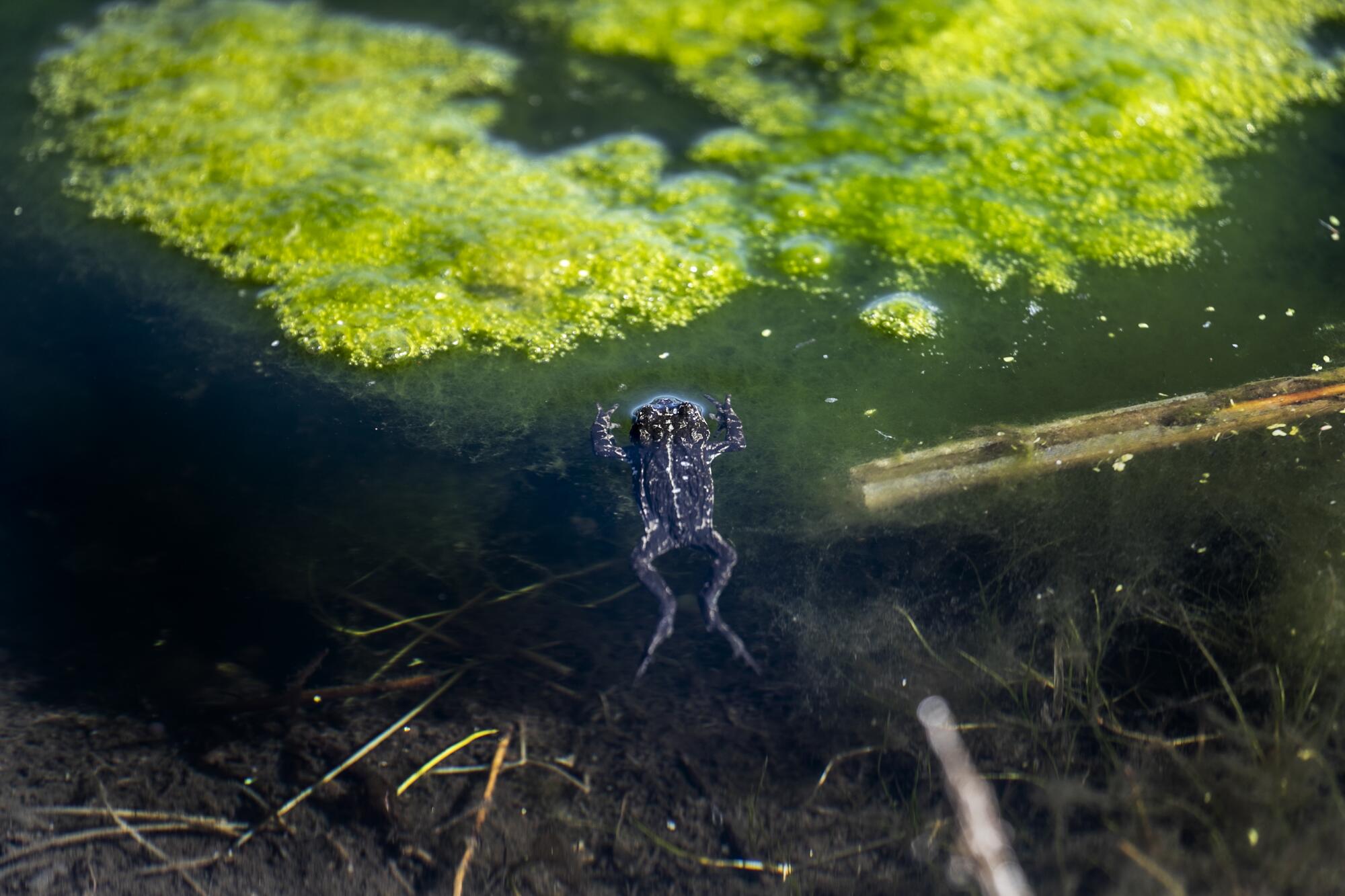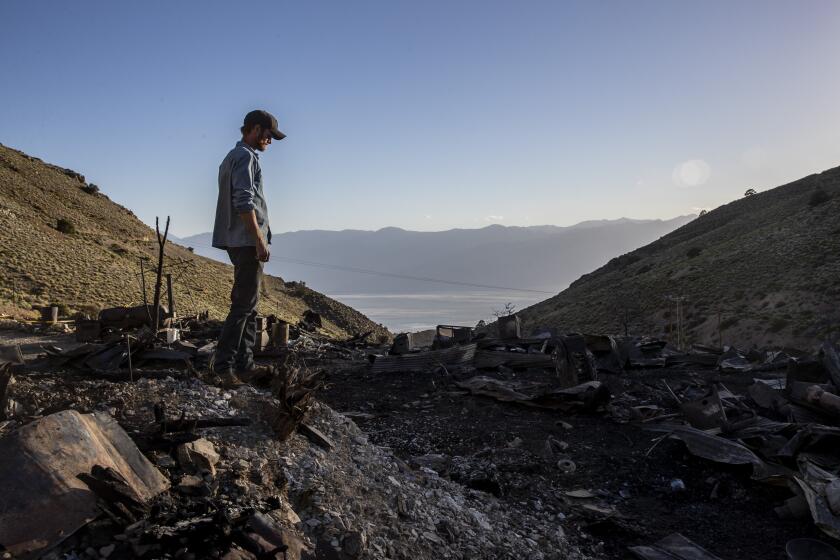
DEEP SPRINGS VALLEY, Calif. — When you’re as rare and vulnerable as a black toad, you can’t afford to be coy about romance.
Surrounded by an unforgiving desert and forever isolated on a small patch of irrigated ranch land about 50 miles southeast of Yosemite National Park, black toads inhabit the smallest range of any North American amphibian.
So when breeding season arrives, as it did last month, this high desert basin nestled between the Inyo and White mountain ranges resounds with the toad’s high-pitched chirrups, which are reminiscent of peeping of baby chicks.
But this “toad heaven” would not be possible without the annual cooperation of the ranch owner, Deep Springs College. One of the smallest institutions of higher education in the United States, Deep Springs provides the amorous toads with all the basic creature comforts they will need to pair up and produce new crops of eggs and tadpoles.

Among those necessary comforts are peace, quiet and plenty of room for the 2-inch-long black toads with warty skin and golden eyes to serenade one another.
Cattle are kept away from the springs that ooze from the base of a nearby cliff from March through September — ensuring that courting toads don’t get trampled, said Tim Gipson, 63, ranch manager at the college.
“My priorities are cattle, toads, water and pasturelands,” Gipson said. “We only graze cattle by the springs in winter, when the toads are dormant and hibernating underground.”
Slammed by heavy winds and bearing precious amphibian cargo, the helicopter heaved skyward from a remote mountain ranch on the Baja California Peninsula.
The college, a complex of low-slung buildings surrounded by cottonwood trees, occupies a remote corner of the high desert, roughly 20 miles from the Nevada border. Framed by volcanic peaks, rock towers and sagebrush-studded alluvial fans, the area is the very definition of “remote.”
Grazing cattle and saving black toads have been dominant forces on campus operations for half a century, and a conservation success story at a time when amphibians are facing declines and extinctions across the United States and around the world.
Once abundant across the vast floodplains of the Great Basin, only about 8,500 black toads cling to existence by their stubby little toes at the college, a relic population isolated about 12,000 years ago when things were starting to heat up.

The toad’s original scientific name, Bufo exsul, acknowledges its extreme isolation. It means “exiled toad.”

Greg Pauley, herpetological curator at the Natural History Museum of Los Angeles County, was a graduate student when he first ventured to Deep Valley Springs two decades ago.
“It was a bit of a shock to see how desolate, isolated and critically important their habitat is,” he recalled. “What’s terrifying now are the increasing demands for use of the desert aquifers that sustain such sites.”
It is one of several genetically distinct toad species that exist only in highly restricted spring-fed habitats and are prone to disease, inbreeding, predation, development and groundwater pumping. Now, longer droughts and rising temperatures from climate change are also upsetting the delicate balance between life and death in those habitats.

“These imperiled creatures face a staggering number of threats to their persistence,” said C. Richard Tracy, 76, a professor emeritus at the University of Nevada Reno. The threats, he said, “are compounded by their remarkably small range.”
“The situation requires urgent attention and strong conservation initiatives to protect and monitor these species,” Tracy said.
The California ghost town of Cerro Gordo was once legendary for its violence. Now, a mysterious fire has destroyed its famed American Hotel.
Cooperative management between Deep Springs College and the California Department of Fish and Wildlife helps protect the black toads and their water sources.
On a recent weekday morning, Padraic MacLeish, 63, director of operations at Deep Springs, led a group of visitors on a tour of the black toads’ nuptial flows.
At the water’s edge, MacLeish carefully scanned dense thickets of willows and bulrush, saying, “Black toads are good at hiding.”

Moments later, he nodded appreciatively toward a pair of toads, one of them floating placidly with only its nose and bulging eyes visible above the surface of the water, and the other clambering up a pile of leaves.
A few feet away, entangled in submerged twigs and pebbles, were long strands of toad eggs that resembled strings of tiny black beads.
With luck, the eggs will hatch in due time, and little tadpoles will begin a precarious existence.
Among those eager to get a glimpse of the toad story unfolding at the springs was Susan Darlington, 63, who was named president of Deep Springs College in September.

Kneeling on muddy banks amid the pervasive smell of cow manure may sound unpleasant, but for Darlington it was an opportunity to get close-up photographs of one of the rarest amphibians on the planet in its lone stronghold: her backyard.
After snapping dozens of pics with a macro-lens from a variety of angles, she remained spellbound.
“Wow! I’ve seen our legendary black toads and have photos to show for it,” she said. “I’m a real Deep Springer now!”








